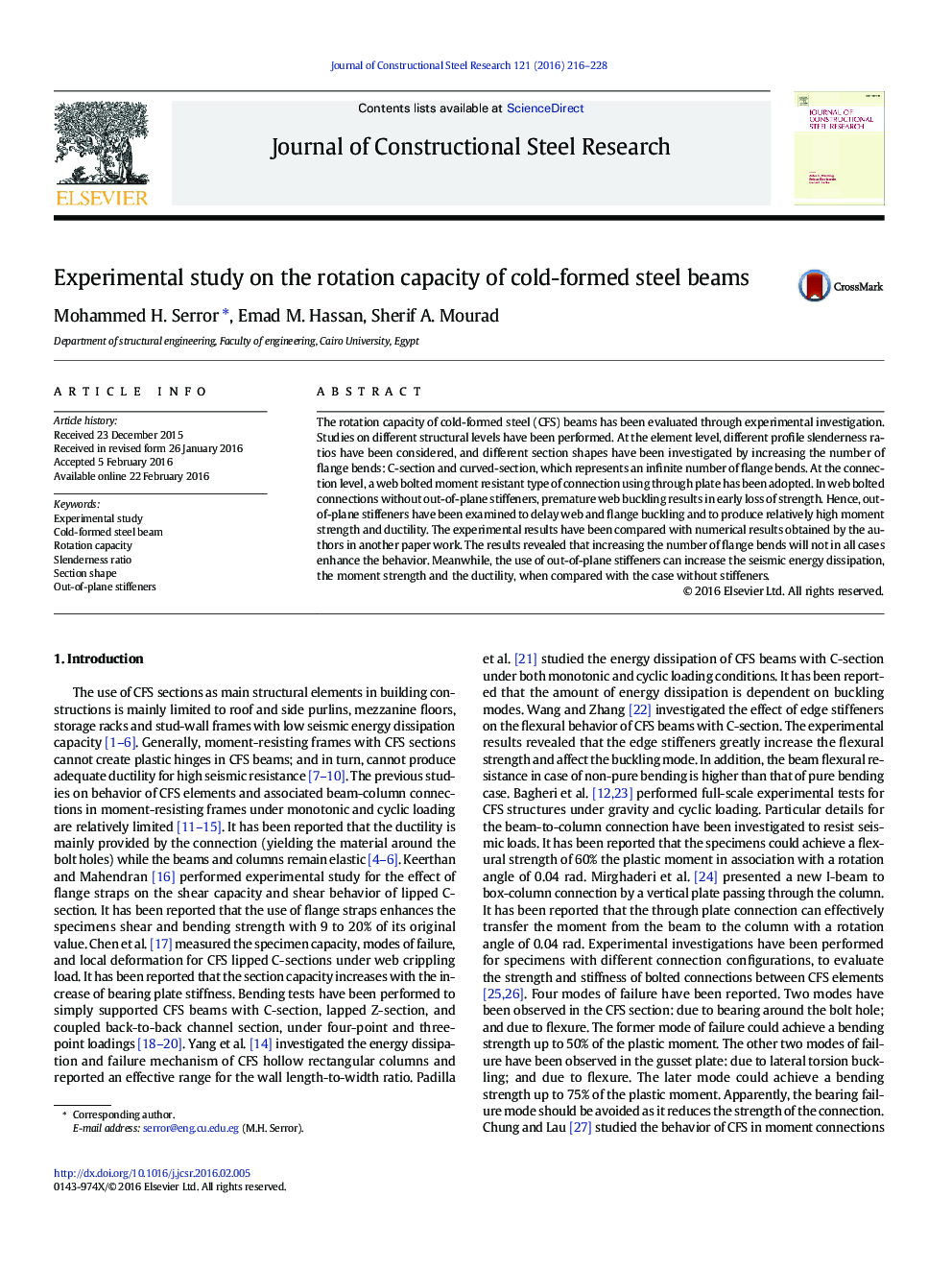| Article ID | Journal | Published Year | Pages | File Type |
|---|---|---|---|---|
| 284229 | Journal of Constructional Steel Research | 2016 | 13 Pages |
•Specimens without stiffeners achieved strength of 0.75 Mp at rotation 0.01 rad.•Specimens with stiffeners achieved strength of 0.98 Mp at rotation 0.03 rad.•Stiffeners enhance strength, initial stiffness, ductility and energy dissipation.•Increasing flange bends delays flange premature buckling and inversely affects web.
The rotation capacity of cold-formed steel (CFS) beams has been evaluated through experimental investigation. Studies on different structural levels have been performed. At the element level, different profile slenderness ratios have been considered, and different section shapes have been investigated by increasing the number of flange bends: C-section and curved-section, which represents an infinite number of flange bends. At the connection level, a web bolted moment resistant type of connection using through plate has been adopted. In web bolted connections without out-of-plane stiffeners, premature web buckling results in early loss of strength. Hence, out-of-plane stiffeners have been examined to delay web and flange buckling and to produce relatively high moment strength and ductility. The experimental results have been compared with numerical results obtained by the authors in another paper work. The results revealed that increasing the number of flange bends will not in all cases enhance the behavior. Meanwhile, the use of out-of-plane stiffeners can increase the seismic energy dissipation, the moment strength and the ductility, when compared with the case without stiffeners.
